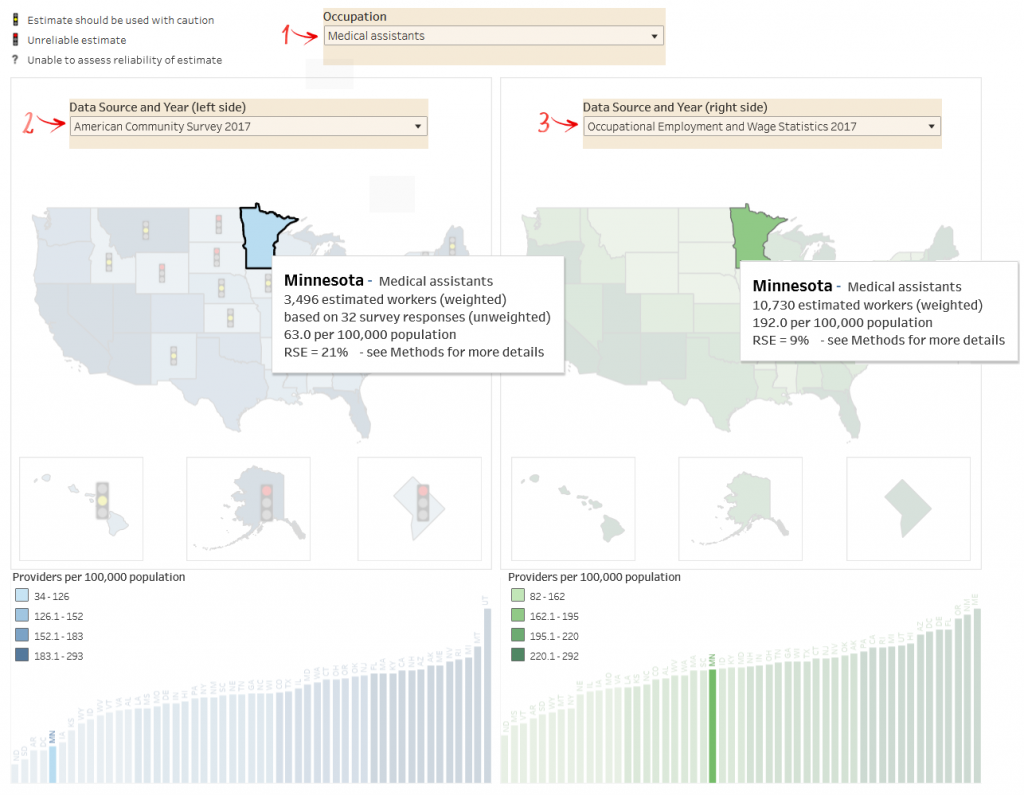Estimated Number of Health Care Workers per 100,000 Population in Each State, by Occupation and Data Source
The charts below show the estimated number of health care workers per100,000 population in each state based on responses to the American Community Survey and Occupational Employment and Wage Statistics using one-year files for 2011, 2014 and 2017 for each data source. See the FAQ for more details.
This dashboard was designed to serve as a supplement to a report outlining methodological and analytical considerations when using different public data sources to understand supply estimates of the allied health workforce (Dahal A, Stubbs BA, Frogner BK, Skillman SM. Leveraging Data to Monitor the Allied Health Workforce: State Supply Estimates. Center for Health Workforce Studies, University of Washington, November 2021). One of the conclusions from that report stated:
Multiple data sources are needed to generate state-level estimates of the supply of allied health workers, including size and distribution of the workforce. Public data play a critical role in the ability of health workforce researchers and health workforce planners to make these estimates.
In addition to adding an extra year of data that was not included in the report, this dashboard is meant to allow easy comparison of supply estimates from different data sources.
Example 1: Comparing different data sources for the same year


Example 2: Comparing different years for the same dataset

The examples above suggest a growth trend in the number of Medical Assistants in Minnesota since 2011. The lower estimated number of Medical Assistants per 100,000 population in Minnesota in 2017 based on the ACS may not be a reliable estimate, unless there are plausible reasons for expecting the numbers to decrease in 2017 compared with 2011 and 2014.
What are the stop lights?

As the published report and the FAQ indicate, one way to assess the reliability of these supply estimates is to consider the relative standard error (RSE) of each estimate. Based on published recommendations, estimates with a RSE of 25% to 49.9% should be interpreted with some caution, and the estimates with a RSE of 50% or greater should be regarded as unreliable. The stoplights provide a visual signal of these recommendations, with a yellow light indicating the estimate should be treated with caution and a red light indicating that the estimate is unreliable.
Suggested citation:
Stubbs BA, Dahal A, Frogner BK, Skillman SM. Workforce Dashboards: State Estimates Dashboard. Center for Health Workforce Studies, University of Washington, 2022. https://familymedicine.uw.edu/chws/resources/supply-estimates/
